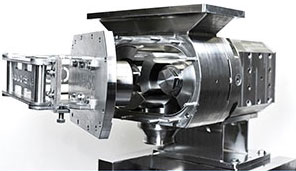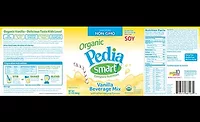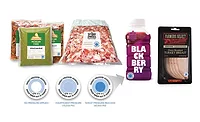Detecting foreign matter to avoid contamination
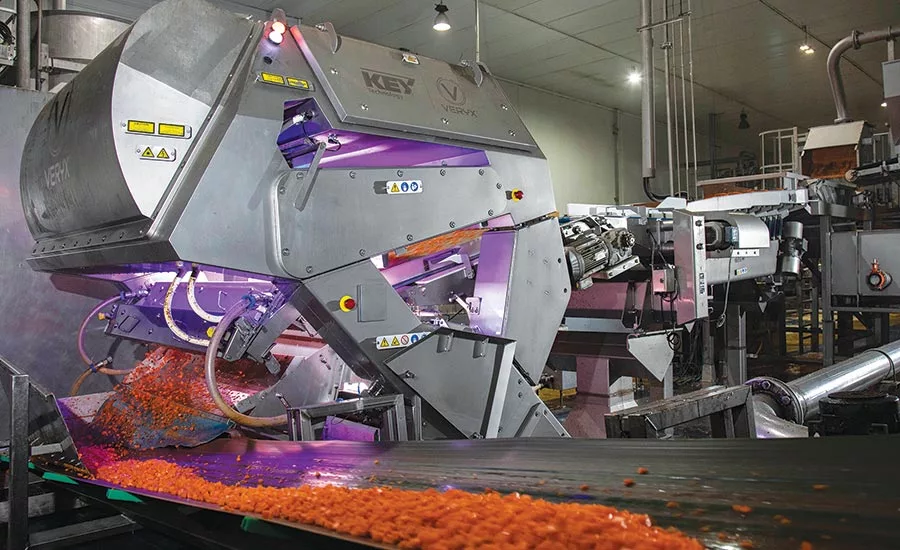
A comprehensive foreign matter detection strategy could include bulk product sorting upstream from inspection systems. For extra protection, Antarctic Foods uses two Key Technology sorters, including this belt-fed VERYX B140 sorting diced carrots.
Photo courtesy of Key Technology
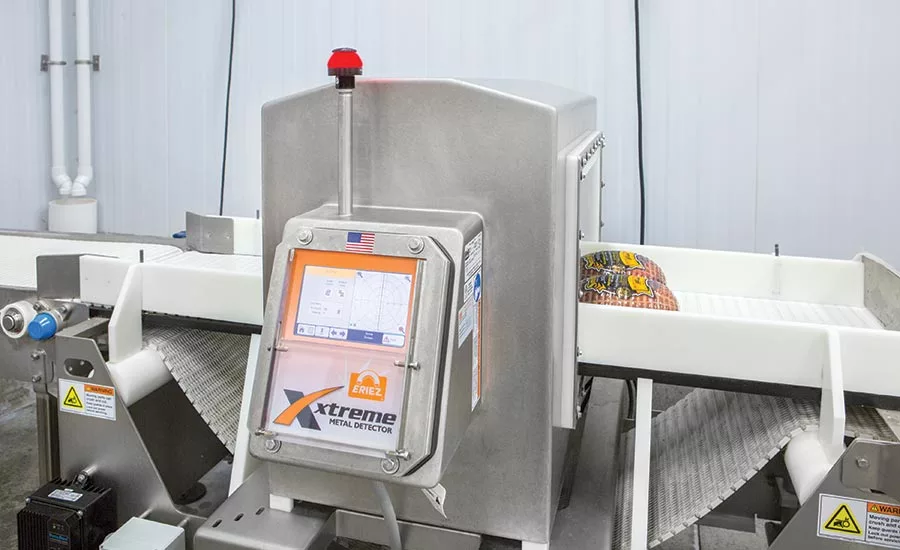
The Eriez Xtreme metal detector is capable of storing hundreds of different products all with unique settings.
Photo courtesy of Eriez
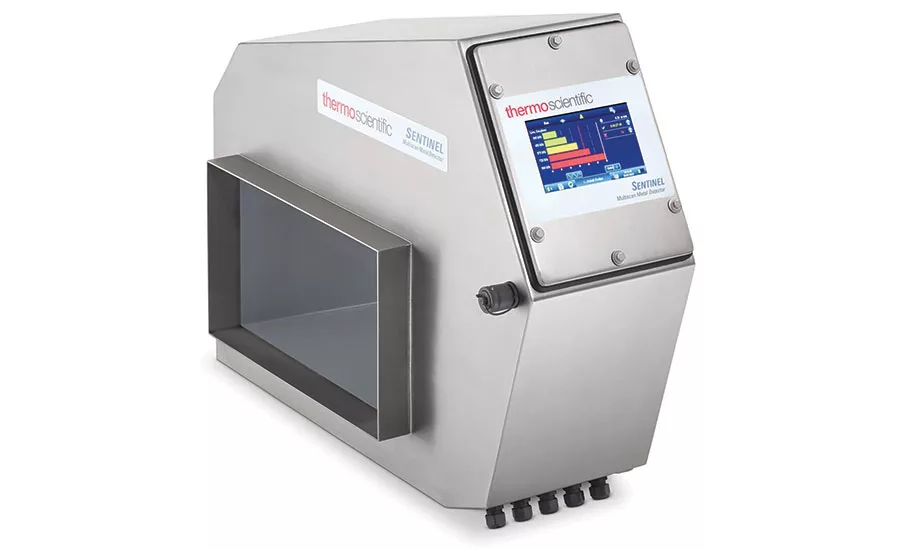
Thermo Scientific recently launched the Sentinel 3000, a compact model for metal detection and checkweighing combined. It mounts on the weighing frame of VersaWeigh and Versa GP checkweighers, reducing footprint while enabling functions like program changes, alarms and rejection statistics.
Photo courtesy of Thermo Scientific

The Mettler Toledo Profile Advantage metal uses Multi-Simultaneous Frequency technology to analyze product signal data captured across a wide spectrum of frequencies simultaneously. This is processed by the company’s 3S software algorithm in real time, which results in a 30% to 50% higher sensitivity than competing technologies.
Photo courtesy of Mettler Toledo
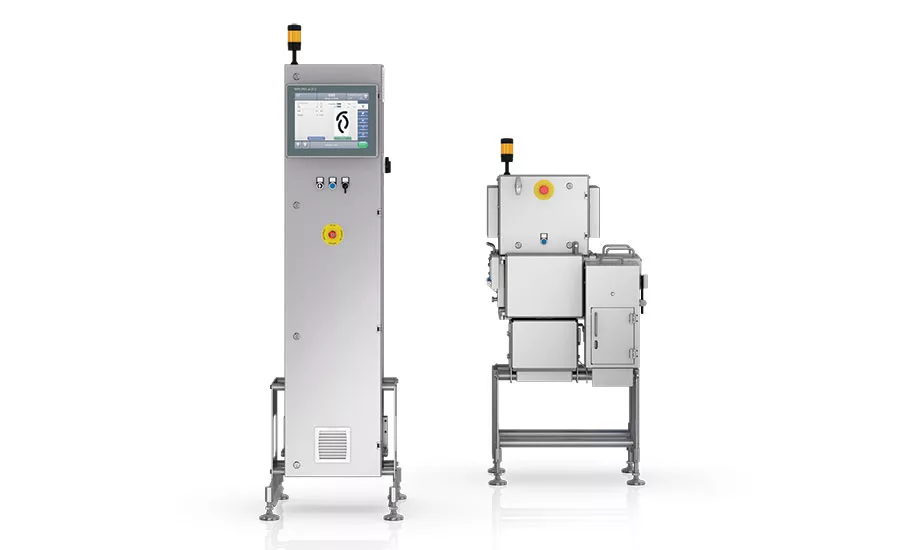
The new SC-2000 X-ray scanner from WIPOTEC-OCS has the scanner and detector separated from the control cabinet, offering a very compact design for tight processing areas.
Photo courtesy of WIPOTEC-OCS
Recalls are increasing over materials that aren’t food ending up in our food. A wide variety of machines can help ensure that foreign matter doesn’t slip into your product.
Today’s sorters, metal detectors and X-ray systems offer custom features to fit your process and product, cutting waste from false rejects, offering vast amounts of helpful data and using the latest technology to find the most tricky-to-detect bits that shouldn’t be there.
Companies must go beyond simple end-of-line inspection, says Robert Rogers, Mettler Toledo Product Inspection senior adviser on food safety and regulations. Purchase agreements should require raw material suppliers to protect against foreign matter contamination, and product inspections throughout the manufacturing process help reduce waste and improve efficiency.
His colleague, Camilo Sanchez, metal detection product manager, says your aim for a foreign matter detection strategy should be to maintain control over the complete process, from ascertaining ingredient quality to dealing with customer and consumer complaints.
“The program needs to be proactive rather than reactive and should be used to prevent the occurrence of contamination in the first place, rather than simply detecting it when it occurs,” Sanchez says.
Food processors often adopt a multifaceted strategy, in some cases inspecting bulk product with a digital sorter and inspecting packaged product with a metal detector or X-ray system, says Karel Van Velthoven, advanced inspection systems product marketing manager with Key Technology. Processors also leverage mechanical systems such as vibratory shakers and rotary graders to remove foreign matter upstream of inspection systems.
Antarctic Foods, which is exceptionally quality conscious, uses two Key Technology VERYX digital sorters on one line for an extra layer of defense.
Looking for quick answers on food safety topics?
Try Ask FSM, our new smart AI search tool.
Ask FSM →
The company sells frozen vegetables as ingredients to baby food processors, sorting products twice—before blanching and after freezing.
“Having two VERYX sorters on one line differentiates us. We’re demonstrating our commitment to producing top quality product,” said Herwig Dejonghe, director general at Antarctic Foods.
Finding the Source
One important message OEMs have for processors is that simply adding inspection or sorting equipment will not solve a foreign matter problem. The equipment should be one part of an extensive strategy.
When an inspection system informs you that something has gone wrong by rejecting the nonconforming product, Rogers says it’s up to the staff to determine where the contamination came from and how to prevent further problems. “This must be done through human interaction,” he says. “Preventing contamination in the first place will have the greatest impact on reducing recalls.”
Bob Ries, lead product manager at Thermo Fisher Scientific, says contaminated products are too often rejected or scrapped without being analyzed. Foreign matter comes from two places: your ingredients or as a result of a production line error, he says. Processors should systematically log and analyze rejected products to try to pinpoint the source. “It’s critical that food processors don’t turn a blind eye to products rejected by metal detectors and X-ray systems.”
Reasons for Inspection
Here are some reasons processors add or upgrade inspection and sorting equipment:
- Brand protection/consumer safety
- Customer demands for safer food
- Quality standards
- Expanding customer base
- Response to a recall
- Lawsuit mitigation
- Food safety certification
- Outdated electronic components
- Breakdown prevention for older models (especially when equipment is a critical control point)
- Technology advances (e.g., better operator interface, traceability features)
- Increasing regulations (e.g., import laws)
OEMs add another reason that should get your attention: Recalls can cost hundreds of thousands or even millions of dollars. That makes an inspection system’s total cost of ownership and return on investment more attractive. Don’t forget the hidden cost of brand reputation damage, says Ray Spurgeon, metal detection product manager for Eriez. “All things considered, the equipment is worth every penny.”
Still, Ries of Thermo Scientific says too many companies don’t want to invest in inspection equipment because they view it as another source of operational problems and cannot calculate the cost savings on a daily basis. “This is a huge mistake because it is clear that better quality and fewer problems yields lower costs.”
Selecting the best system for your process and being disciplined in operating it will reduce problems and costs simultaneously, he says.
In general, foreign object risk mitigation is not mandated by regulation in most of the world, Ries explains. But processors understand that ensuring brand protection makes good business sense. “Implementing a metal detector or X-ray system is a relatively inexpensive insurance policy against random occurrences that can have big costs.”
A contaminant detection system will need replaced at some point, and upgrades are generally planned over a 5- to 10-year timeline, Ries notes. “The key thing to adding or upgrading foreign matter detection is to make sure you are not reacting to a problem you may have overlooked or minimized. You want to be proactive, not reactive.”
Choosing a System
Many systems offer customer features to fit your lines’ needs, and equipment makers should do extensive testing with your product to find the right machine.
Thermo Scientific worked with a small, growing tortilla manufacturer to help the team understand and optimize metal detection and X-ray in the facility, based on the product line and customer needs. The processor installed both technologies and even tested the new multiscan metal detector to see if the most demanding product lines needed it.
The tortilla maker concluded it needed X-ray on the most challenging lines, typically for the corporate customers, and upgraded from single frequency to multiscan on lines making commodity or food service products, Ries says.
The modular design of the Key Technology VERYX sorters helps satisfy a wide range of product characteristics—wet, dry, frozen, sticky, fragile or unstable, such as lettuce leaves that tend to sail and frozen cranberries that tend to bounce and roll, Van Velthoven says.
Many features are customized: material handling systems present product to the inspection zone to maximize sort accuracy; cameras can detect color, size and shape; lasers can sense structural properties; hyperspectral sensors can detect chemical composition; and software uses algorithms to detect the defects each processor wants to remove.
Equipment makers say to look for a company that offers consultation, not just a sales call. “It all starts with being good listeners,” says Spurgeon of Eriez. “If the goal is really to solve a complex problem, we need to ask a lot of questions to help us see the entire picture of how the client is producing its goods. After that, we can narrow in on solutions.”
If the decision to adopt a metal detection program is not part of a larger strategy, there is a risk that it will become less important to the organization and won’t be effectively maintained, says Sanchez of Mettler Toledo.
His company’s primary objective is that the customer understands basic metal detection principles to select the correct solution, ensuring the program is effective and avoiding disappointment in performance later, he says. After choosing the right system, it’s important to work on wider issues, including meeting strategic objectives and analyzing foreign material hazards and frequency of occurrence.
A processor’s food safety management program should be the starting point to evaluate an investment because a properly structured and maintained program will identify areas where technology can create value for the business, Sanchez says.
Trimming False Rejects
False positives or false rejects are detrimental to the overall food safety management program, says Rogers of Mettler Toledo. They reduce confidence in the system and contribute to reduction in efficiency and increased waste.
The key to understanding a system’s capabilities is validation, he says. First set the system to inspect the minimal or zero false positives, then challenge it to identify its true capability.
Spurgeon expands on that idea to explain that Eriez uses the scientific method. The team creates a testing process to mimic the client’s process and runs the product “a multitude of times” under conditions as close as possible to the client’s. “Repeatability is critical. This gets us very close to production results the client would see, aside from a few variables.”
A strong support team after installation is a must. Eriez representatives are all factory trained in troubleshooting and offer local service for startups or anomalies for even the most remote locations.
Key Technology’s Pixel Fusion detection module on its VERYX sorters cuts false rejects by combining pixel-level input from multiple cameras and laser sensors to produce higher contrasts that better differentiate good product, Van Velthoven says.
One feature of Key’s sorters that appealed to Quebec Wild Blueberries was the precision of the ejection system, says Pascal Hudon, the fruit company’s director of operations. Key designs the VERYX sorters with variable air valve spacing for more accuracy.
Key recommended double the air valves of other sorters, placing them every 5mm. “We’ve improved our defect removal rate at the same time we’ve virtually eliminated false rejects,” Hudon says.
Matthias Kleine, food segment director, WIPOTEC-OCS, says a strong hardware-software combination lowers false rejects. The company’s machines use high-resolution scanners and software that localizes the foreign body despite fluctuations in product shape and thickness.
The company tests as many product variations as possible against different types of foreign matter to adjust a scanner before installation.
False positives are caused by a setup that is not optimized or a change in product effect that is not handled correctly, Ries of Thermo Scientific explains. The company’s Auto Learn software in its Sentinel multiscan metal detectors uses clean product and contaminated product data to clearly inform the user what is detectable and not detectable. It optimizes 20 settings automatically, a process that would be difficult and time consuming otherwise, he says.
Tricky Contaminants
Metal wires are a long-standing challenge for the industry and are best detected by X-ray due to the orientation effect problem that metal detectors have, Ries says. Plastic is another difficult material to find, with the most practical solution being plastics with some metal content to make them detectable (see sidebar).
The most difficult problem to overcome is when a metal contaminant signal aligns completely with a product signal, hiding it from detection, Ries explains.
Thermo Scientific Sentinel multiscan metal detectors overcome product effect challenges by running five frequencies at a time, applying a frequency that detects metal while ignoring product signals. “It is essentially like operating five metal detectors in a row where the chance of detection grows exponentially,” he says.
Mettler Toledo Safeline MSF metal detectors, such as the Profile Advantage, use various combinations of high and low frequencies simultaneously. The most sophisticated detectors use built-in Product Signal Suppression technology, with two stages of discrimination: frequency and phase, Sanchez explains. This cancels the information from combinations of high and low frequencies. “The result is effective removal of the product signal, allowing for much smaller metal contaminants to be detected.”
The improvement in detector performance—from traditional single-frequency metal detectors to Multi-Simultaneous Frequency technology—is as much as 50% for items exhibiting product effect, Sanchez says.
False positives can happen in challenging applications when sensitivity levels must be increased to a point where the metal detector setup becomes unstable and rejects good product. “The advent of Mettler Toledo Multi-Simultaneous Frequency and Product Signal Suppression technology now gives manufacturers greater confidence that they can meet or exceed a factory detection standard without the worry of generating costly false rejects.”
Kleine of WIPOTEC-OCS explains that X-ray detection works by absorbing energy of different materials at different rates, so more energy levels would imply that the machine would be able to detect more and smaller types of foreign matter, he says.
The company is field testing a new X-ray technology that has the potential of using as many as 256 energy levels. “These additional energy levels are enabling us to detect the smallest of bones like the fan and rib bones in chicken meat,” he says. “Combining this new technology in an IP69K X-ray machine enclosure design should prove to be an interesting solution for many diverse food inspection tasks.”
As line speeds continue to increase, he expects the industry eventually will reach a point where multienergy X-ray becomes an absolute requirement.
A Machine’s True Value
Inspection systems and sorters have added benefits to ensure quality and offer data that can help your bottom line.
Along with inspecting, machines often look for proper package enclosures, missing or misshaped products, package fill levels, and proper weight—to name a few. “Astute processors take advantage of these added machine capabilities in order to maximize their customer’s product satisfaction and in turn protect and enhance the company’s brand image,” Kleine says.
When Eriez developed its Xtreme Metal Detector, it added more standard “bells and whistles” based on input from numerous operators, supervisors and engineers. QA leaders were particularly interested in data features to help with audits. “With everyone working so hard these days, the last thing you want to have to do is manually document rejects or phase angles,” Spurgeon says. “The machine does that for them.”
The machine records validation data so people can follow up if anything is unusual. Workers can download data to a thumb drive and spreadsheet to filter and sort, plus with the machine’s Smart X7 Link, users can remotely access all information. When you just want to peek at what’s going on, this save trips to the manufacturing floor that could disrupt productivity, Spurgeon says.
“The amount of data that can be pulled over the course of a year is massive,” he says. “More can be learned in a short period of time versus years of manually recording events. We have big data in our crosshairs.”
Key Technology sorters equipped with its Information Analytics capability use powerful computers to continuously analyze data to reveal patterns and trends that staff can act on to optimize yields, improve line efficiency, and eliminate food safety and quality problems, Van Velthoven says. That can create a competitive edge.
He recommends that processors look for equipment that features an OPCUA-compliant infrastructure so it seamlessly integrates with virtually any automation system. To be effective, the flexibility to support a variety of data formats and connectivity protocols is essential, he explains. Proprietary formats are unlikely to scale.
Handling and analyzing all the available data can be a big challenge, Ries of Thermo Scientific says. The most common request today is to network a system making storage of inspection records easy, he notes. Those records can then be mined at a later date if there is a problem.
The biggest barrier to data/IIOT adoption is network security. Many companies still have a policy to never put anything on their production line on a network with internet access because the risks outweigh the rewards, Ries notes.
The best benefit that an inspection system provides is a deeper understanding of where quality and safety weaknesses lie, Ries says. Customers installing an X-ray machine for the first time sometimes call immediately to complain that it’s false rejecting too much.
“We go onsite only to find out they are detecting some sort of problem or variation in their product they were unaware of,” he says. “This realization opens their eyes to potential ways to improve their process and product having a lasting impact on their business and customer satisfaction.”
For more information:
Eriez, www.eriez.com
Key Technology, www.key.net
Mettler Toledo, www.mt.com
Thermo Fisher Scientific, www.thermofisher.com
WIPOTEC-OCS, www.wipotec-ocs.com
